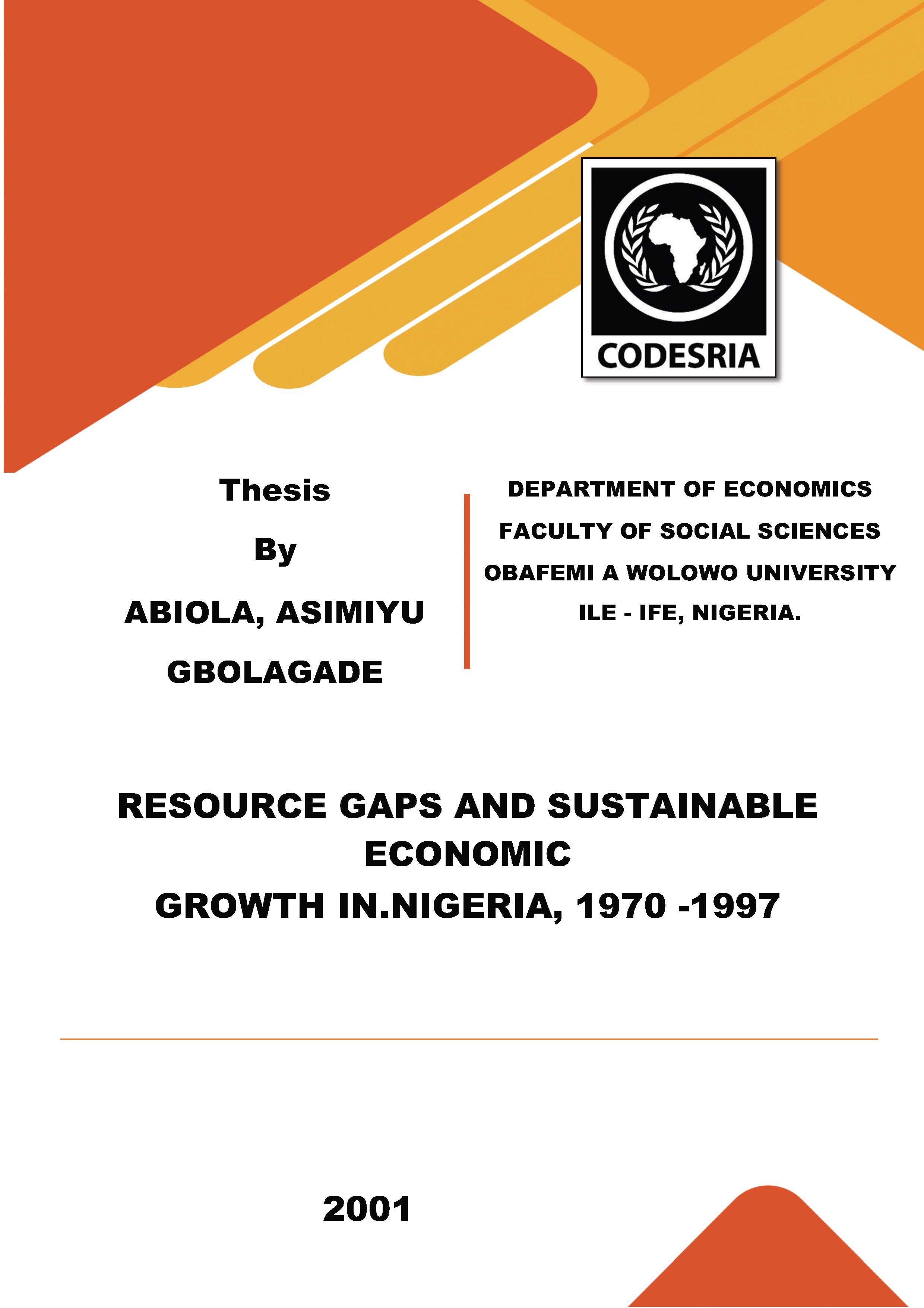RESOURCE GAPS AND SUSTAINABLE ECONOMIC GROWTH IN.NIGERIA, 1970 -1997
Mots-clés :
Economic growth, investment, savings, NigeriaSynopsis
The study examined the effects of resource gaps (Investment-Savings, ExportImport
and Budgetary gaps) on sustainable economic growth in Nigeria between 1970
and 1997. The study aimed at determining the existence of output gaps; examining
causal relationships among the resource gaps; determining the effects of the gaps on
economic growth; identifying the most significant and binding resource gap on economic
growth; examining how the gaps had been financed as well as assessing the relative
merits of each source of financing.
The study made use of secondary data. Descriptive and econometric analyses
were employed. The descriptive analysis was based on ratios and percentages of key
variables. The econometric analysis involved specifying models to estimate the effects
of various resource gaps on sustainable economic growth in Nigeria. The models adopted
error correction modeling (ECM) technique. Some equations were estimated using the
Ordinary Least Squares (OLS), while some other equations were estimated
simultaneously using the Two Stage Least Squares (2SLS) techniques.
It was found that output gaps existed throughout the review period in Nigeria.
Granger causality test shows that the three resource gaps combined together to cause
output gap. Also Investment-Savings gap causes the Export-Import gap and Budgetary
gap. However, Export-Import gap causes Investment-Savings gap, while Budgetary gap
causes Investment-Savings gap and Export-Import gap. A unit increase in the
Investment-Savings gap worsened the output gap by 1.5 units. A unit increase in the
Export-Import gap worsened the output gap by 0.04unit. However, a unit increase in the
Budgetary gap worsened the output gap by 2.5units. Thus, the three resource gaps
combined together to limit economic growth in Nigeria.
Téléchargements






